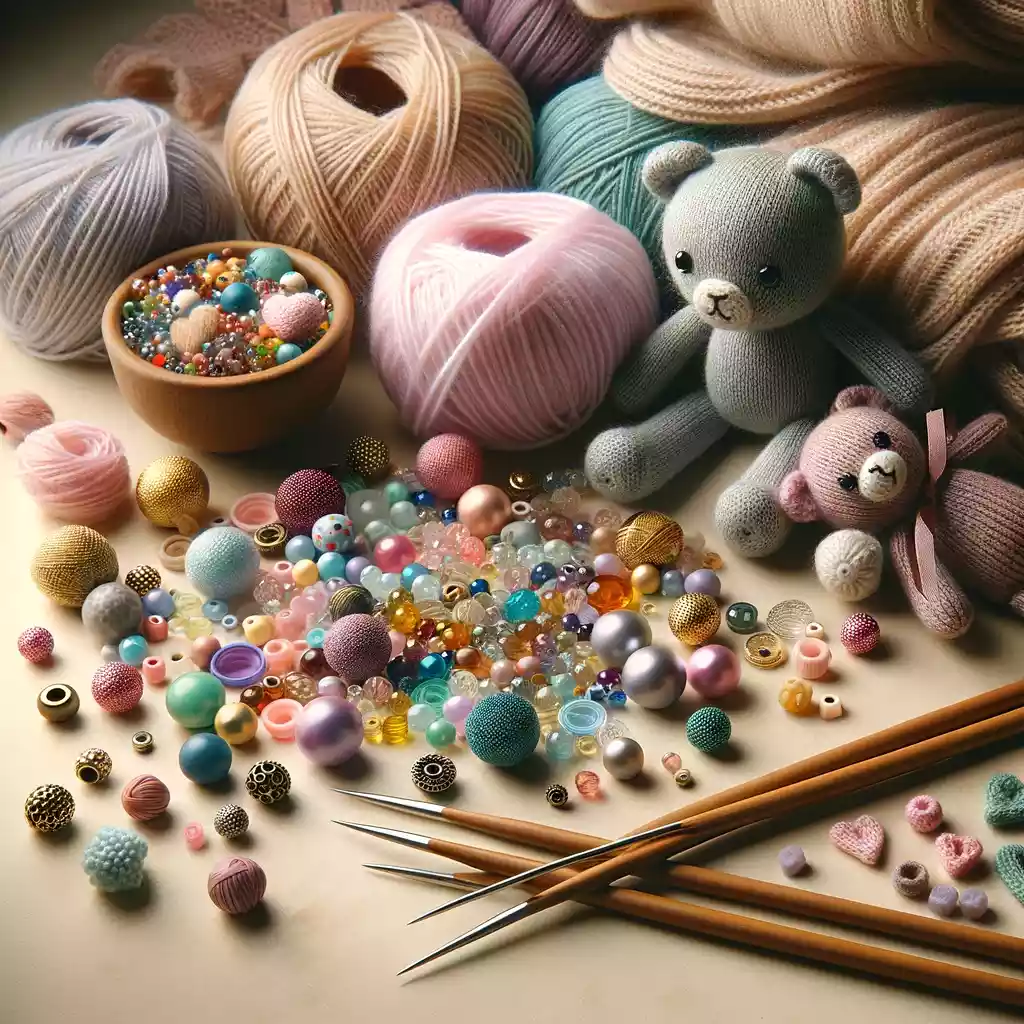Knitting
What Is the Best Way to Integrate Beads into Knitted Toys?

Best Practices for Integrating Beads into Knitted Toys
Integrating beads into knitted toys can transform a simple project into a dazzling creation. Beads add texture, color, and sparkle, making each toy unique. Let’s explore how to effectively incorporate beads into your knitted toys, focusing on both the aesthetic and practical aspects.
Bead Selection: Which beads are best for knitted toys? Consider the bead’s material (glass, plastic, wooden), size, shape, and color. Ensure the beads complement the yarn and the toy’s overall design. Glass beads add a touch of elegance, while plastic and wooden beads offer safety and durability for children’s toys.
Sewing Beads: How do you securely sew beads onto knitted toys? Use a fine, strong thread and a needle thin enough to pass through the bead. Secure each bead individually to prevent them from coming loose.
Safety Considerations: What safety considerations should you keep in mind? When making toys for young children, ensure beads are securely attached and large enough not to pose a choking hazard. Always prioritize safety in your design.
Color Coordination: How important is color coordination between beads and yarn? Color coordination can either make your toy pop or blend the beads seamlessly into the design. Choose beads that either contrast with or complement the yarn color for the desired effect.
Texture Contrast: How can beads enhance the texture of knitted toys? Beads add a tactile element. Consider the contrast in texture between the soft yarn and the hard beads to enhance sensory play for children.
Beaded Eyes: Can beads be used for the toy’s eyes? Yes, beads make excellent eyes, adding life and character to the toy. Ensure they are appropriately sized and securely attached.
Decorative Patterns: How do you plan decorative patterns with beads? Sketch your design before beginning. This planning stage is crucial for intricate patterns or when using beads to highlight specific features.
Threading Techniques: What threading techniques are best for adding beads to knitting? Pre-string the beads onto the yarn, or use a crochet hook to add them individually as you knit. Choose the method that best suits your design and skill level.
Material Compatibility: How do you ensure compatibility between beads and yarn? Test the beads with your yarn to ensure they slide easily and don’t snag. Compatibility affects both the ease of your work and the final appearance.
Size and Shape Variation: Why vary the size and shape of beads? Varying the size and shape of beads adds visual interest and depth to your toy, making it more engaging.
Securing Beads: How do you ensure beads are secured? Knot the thread on both sides of the bead and apply a small amount of clear fabric glue for extra security, especially for toys intended for young children.
Bead Embroidery: What is bead embroidery, and how can it enhance knitted toys? Bead embroidery involves sewing beads onto the fabric to create patterns or pictures, adding intricate details to your toy’s design.
Design Planning: How crucial is design planning when integrating beads? Planning is essential, especially for complex patterns or when using beads as a focal point. It ensures a cohesive and balanced look.
Bead Accents: How can you use beads as accents? Use beads to highlight specific details, such as the center of a flower, without overwhelming the design. Less can be more.
Enhancing Details: How do beads enhance the details of knitted toys? Beads can define features, add expressions, or create texture, bringing your toy to life.
Beads in Knitting Patterns: Can you knit beads directly into patterns? Yes, by pre-stringing beads onto your yarn, you can incorporate them into your knitting pattern, allowing for seamless integration.
Creativity with Beads: How does creativity play a role in bead integration? Let your imagination guide you. Beads offer endless possibilities to personalize and enhance your knitted toys.
Durable Stitching: Why is durable stitching important? Ensuring that beads are attached with durable stitching prevents them from detaching during play, maintaining the toy’s quality and safety.
Bead Types: How do different bead types affect the toy’s look? The type of bead you choose (glass, plastic, wooden) can significantly affect the toy’s aesthetic and texture.
Finishing Touches: Why are finishing touches with beads important? Finishing touches, such as the strategic placement of beads, can elevate the overall aesthetic of the toy, adding that final sparkle or detail that makes the piece truly special.
This approach to integrating beads into knitted toys opens up a world of creativity and personalization, allowing each knitter to put a unique stamp on their creations. By considering these aspects, you can create toys that are not only visually stunning but also tactilely interesting and potentially heirloom-worthy.
- Bead selection
- Sewing beads
- Safety considerations
- Color coordination
- Texture contrast
- Beaded eyes
- Decorative patterns
- Threading techniques
- Material compatibility
- Size and shape variation
- Securing beads
- Bead embroidery
- Design planning
- Bead accents
- Enhancing details
- Beads in knitting patterns
- Creativity with beads
- Durable stitching
- Bead types (glass, plastic, wooden)
- Finishing touches

